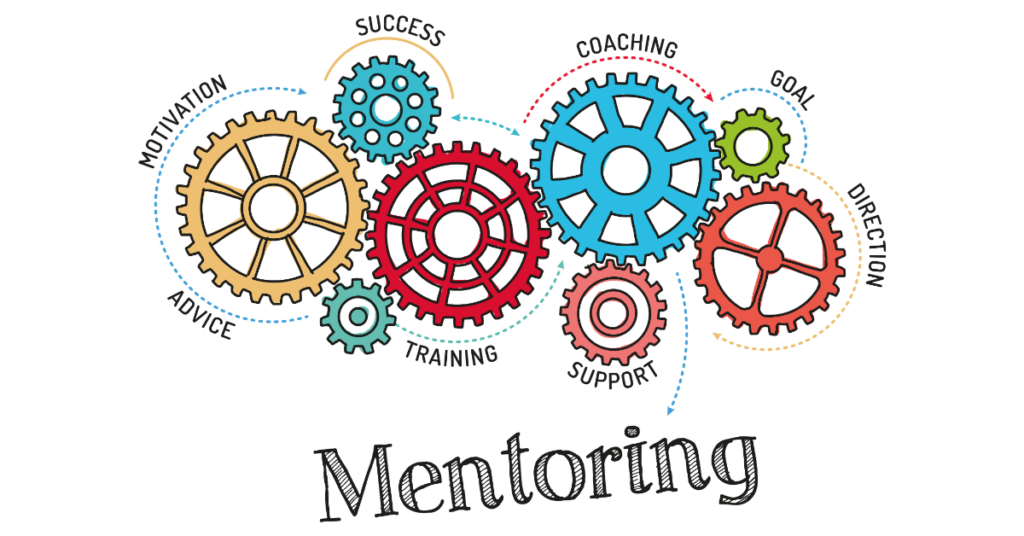You’ve started building your analytics team. That’s a great feeling and one that you want to see continue. If you started off hiring a few entry-level analysts, you might be wondering, “Now what?” That’s what I’m going to tackle in this article: mentoring new analysts into high-end assets.
To prepare you for this mentoring role, you’ll want to focus on three areas:
- Strategic skill development
- Motivation and expectation management
- Real-world application of analytic tools
To build a high-end analytics team, you’ll need to nurture the potential within your junior analysts.
The challenge in making this transformation lies in balancing two opposing factors.
First, you need to bridge the gap between their initial capabilities and the advanced skill sets needed for high-end analytics.
Second, you need to maintain motivation while acknowledging the reality that most analytic roles focus on data management, descriptive analysis, and reporting.
So, let’s get into how to make that happen.
Strategic Skill Development
You want to begin mentoring new analysts with an idea of the skills you eventually want your team to have.
It’s okay if they aren’t going to need these skills in the immediate future. Your goal at the beginning is to create a road map showing your destination.
Even if you’re not 100 percent sure about all of the skills, that’s okay. You can refine and revise the road map in the future.
For now, try to create a 1 – 2 year goal.
In your road map, you want to include four (4) pieces of information at a minimum. Create a table in Microsoft Excel of Google Sheets where each row includes:
- A specific analysis
- Software to perform the analysis
- Proposed data source
- Real-world use case
An example might look like this:
| Analysis | Software | Data Source | Use Case |
|---|---|---|---|
| Contingency Tables/Chi-square | Excel/Python | Sales Database | Exploratory Demographic Analysis |
| Linear Regression Models | Excel/Python | Sales Database | Predict Customer Lifetime Value |
| Cluster Analysis | Python | Email Service Provider Opt-ins | Content Marketing Segmentation |
| Data Visualization | Power BI | Varied | Executive Dashboard |
This table lists out your goal for the destination of your journey.
For each analysis, your analysts will need to learn three components to ensure solid comprehension. They need to learn the:
- Foundational concepts about when to use the analysis, and how to interpret the results
- Mathematical mechanics of how the analysis works
- Programmatic execution in the specified software
Read more about these three levels of analytic comprehension in my post on the subject.
Important Considerations
If your chosen software is complex, you’ll want to identify options for providing access to training.
Sure, they could search online for free training, but finding comprehensive quality content takes time. Then, they still need to put in the work to learn.
I strongly recommend you invest the time to identify good training content.
Ideally, you want your team to be learning before they need to have the skill set. You can build an airplane while you’re flying it, but it’s not very fun to do.
Don’t worry if the day-to-day demands of the job don’t currently require what your analysts are learning. It’s an investment in the future.
Finally, always make sure that you have a real-world use case, or application, of the techniques they are learning. More to come on this below.
Fostering a Culture of Learning
Young analysts have an Achilles heel: they often don’t like to admit they don’t know something.
Too often, they adopt the “fake it ‘till you make it” approach. When confronted with analyses they haven’t used before, their first instinct is to try to wing it on their own.
It’s an admirable quality, that costs a lot of time lost navigating rabbit holes of poorly designed and incomplete content.
As a leader, you want to promote a culture of continuous learning, and encourage curiosity and experimentation. However, you want that learning time to be structured and productive.
To achieve a structured self-learning environment, you want to cultivate a few resources in your organization:
- Access to training content: self-paced online courses from reputable sources are a great investment.
- A library of analytics literature: Many papers are accessible online, and a small library of books (think, 10-15 carefully selected texts) can be incredibly useful
- A training sandbox: This is a separate section or folder on your network, with copies of data that analysts can experiment with. A good sandbox prevents them from breaking the data and tools your business relies on.
- (Optional) Competitive analytics: Encourage and reward your analysts for participating in analytics competitions or hack-a-thons to test out their skills. Not only is it fun, but competition helps them understand their strengths and weaknesses relative to other analysts.
As I mentioned before (and will again…see a theme?), you also want your analysts to understand the use cases for the skills they are learning. They need to know what the end purpose is.
Finally, foster a culture where saying, “I don’t know,” is acceptable.
I used to encourage open honesty with my analysts by telling them I could help them learn faster, but only if I knew where their limits were.
Motivation and Expectation Management
Analysts like to be kept busy and frequently enjoy learning new things. That is often part of their personalities.
The drawback to this personality trait is that they also get bored quickly. They don’t like to do the same analyses repeatedly without a change in activities.
Even if your analysts perform multiple analyses on a rotating cycle (e.g., monthly or quarterly), they will eventually lose motivation.
This is completely understandable because people aren’t robots. Everyone needs to have variety in their activities and interactions.
Motivation
So how do you keep analyst motivation up if your business doesn’t evolve like Google or Amazon?
Start by considering the ways in which your business can evolve.
Go back to your analytic road map and see what remains to be done. If you’ve completed all the proposed analyses, it’s time to redo the next phase of the road map.
Next, help your analysts find ways to improve what they have done in the past. I use a simple framework with my teams to illustrate the point:

This process begins with an idea which the analysts develop and turn into a working analysis/report.
If the analysis is repetitive, their next goal is to automate the process to minimize user input time.
Next, the end-users and analysts work together to improve the analysis through enhancements.
Finally, the process of enhancing and automating continues iteratively to optimize the analysis as the organization evolves.
This framework has two great benefits for analysts:
- They can see that their work is an ongoing process of incremental improvement.
- Automated analyses require less time to manage, giving analysts more development time for the next project.
Expectation Management
Finally, beyond keeping analysts motivated, you’ll want to let them know what the development timeline is.
They will want to tackle the sexiest analyses first; but they may need to handle other activities first. As long as they understand the rationale behind the order of development, waiting for specific activities to begin becomes easier.
Real-World Application and Project Ownership
When you’re mentoring new analysts, always keep real-world use cases in mind.
They need to know how the skills and knowledge you ask them to learn will ultimately be used. Be explicit about explaining this so that they become attuned to how you view business problems and analytic needs.
You will provide them with training materials and sandbox environments where they can experiment because you read this article.
However, there are other approaches you can use to help the mentoring process.
First, connect junior analysts with senior analysts to shadow and assist with their development processes. Taking this approach will expose your younger analysts to the ways more experienced staff think and work.
Second, provide junior analysts with ownership over small projects that will contribute to larger objectives. By giving them ownership over these pieces, you allow them to stretch their skills while minimizing risks associated with failure.
Third, when you hand over smaller projects, provide young analysts with direction of the non-negotiable aspects of the project. However, allow them the latitude to develop the non-critical pieces of the activity on their own.
These recommendations will help you mentor your new analysts, while maintaining their motivation. They will also remain intellectually challenged, while you minimize the risk of not meeting critical requirements.
Creating a Feedback Loop
Analysts come and go. Staff turnover is an unfortunate fact we all must live with.
This means at any given time, you are likely to have staff in various stages of your analyst development process.
To ensure that you don’t let any of them fall through the cracks, you must develop feedback mechanisms.
Your feedback should focus on:
- Development process for each analyst
- Their experience in your mentoring system
- Celebrating successes
- Correcting concerns
You want to ensure that each analyst is making progress on the development trajectory you’ve laid out.
I recommend setting one-on-one meetings on a weekly or monthly basis to review progress, identify challenges, and plan adjustments. Keep your performance concerns isolated to these private meetings. Focus more attention on how to address concerns rather than dwelling on the nature of the concern itself.
Successes should be celebrated during one-on-one meetings as well; but consider also celebrating during team meetings. Public celebrations provide a morale boost to everyone and motivation for those working toward achievements.
Be sure to request regular feedback from your team on their experience in your mentoring system. Find out what they like, where they found challenges, and any recommendations they have for changes.
Finally, and most importantly, treat your mentoring system like a living document. The worst thing you can do is create the system and assume it’s perfect the first time.
After you implement the system, adjust challenging components and processes that aren’t working well. Tracking your staff feedback and internal metrics will help you identify if your changes are having the intended impact.
Conclusion
Mentoring new analysts effectively takes time and effort. It’s understandable why so many organizations opt instead to try hiring in the talent they need.
To avoid your analytics group turning into a churning cauldron of recruitment, hirings, and terminations, mentoring is a must. Mentoring your young analysts will improve retention, increase their depth of knowledge, and increase ROI over time.
Like any development project, however, you need a good plan in place. Start with the destination in mind, and the skills you want your dream team to have.
Create a culture of continuous learning, while maintaining motivation and managing expectations for how fast advancement will happen.
Weave the analytic use cases for your organization throughout the development process. Your team needs to always be thinking about why they are developing these particular skills.
Finally, create solid feedback loops with a focus on continuous improvement to the mentoring process. These approaches not only maximize the potential of your analytics team but also ensure that your organization remains competitive in an increasingly data-driven world.



